Access Control
Go Safer Security: Your Trusted Partner for Access Control System Installation and Maintenance in Maryland. Expertly installed and maintained access control systems for enhanced security and peace of mind.
Access Control System
Smarter Access Control
Product Overview
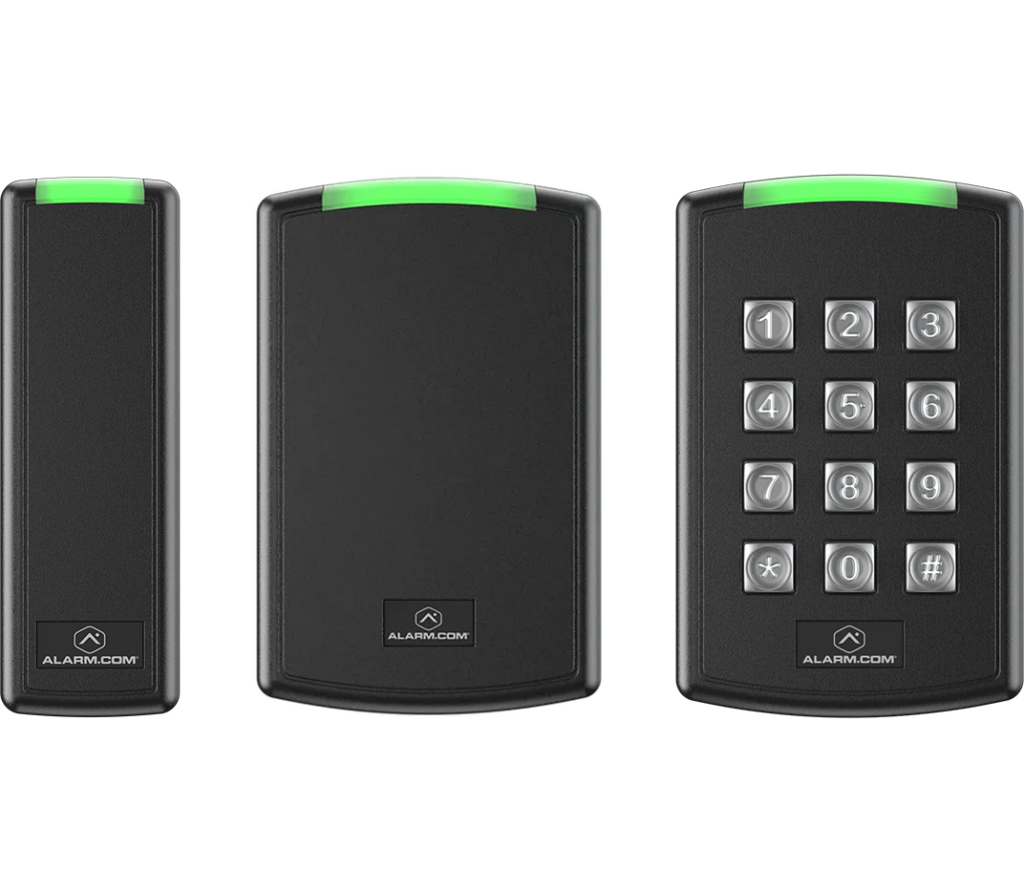
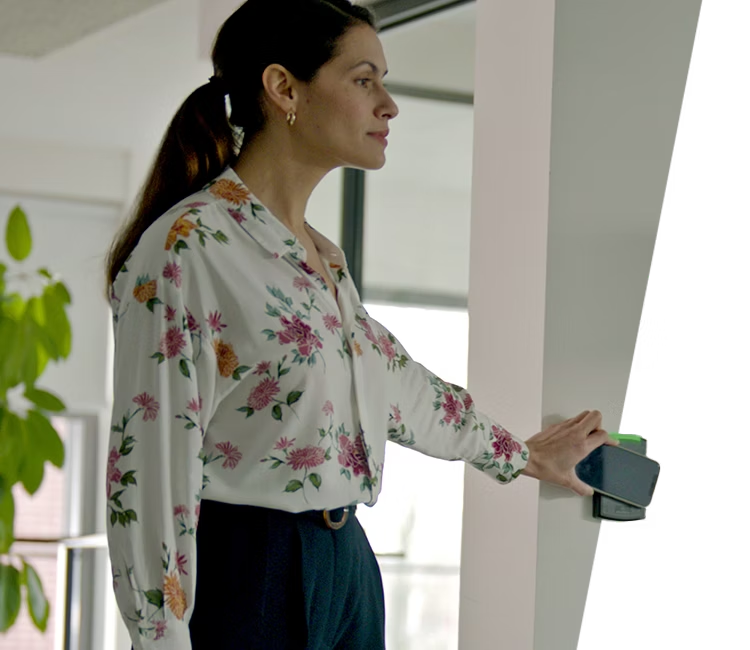
Mobile credentials
Save money, time, and frustration by eliminating the use of separate badges or key fobs and allow employees to access doors by swiping their smartphone.
Simplified access management
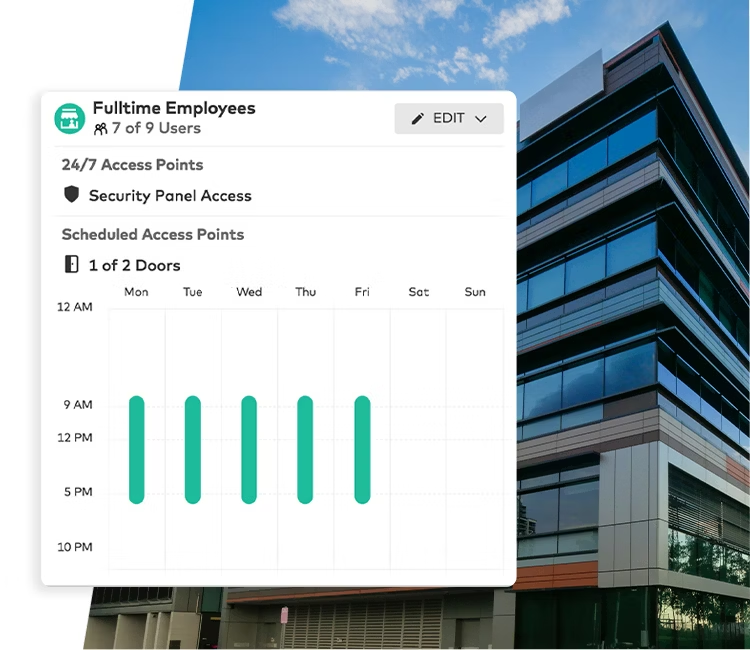
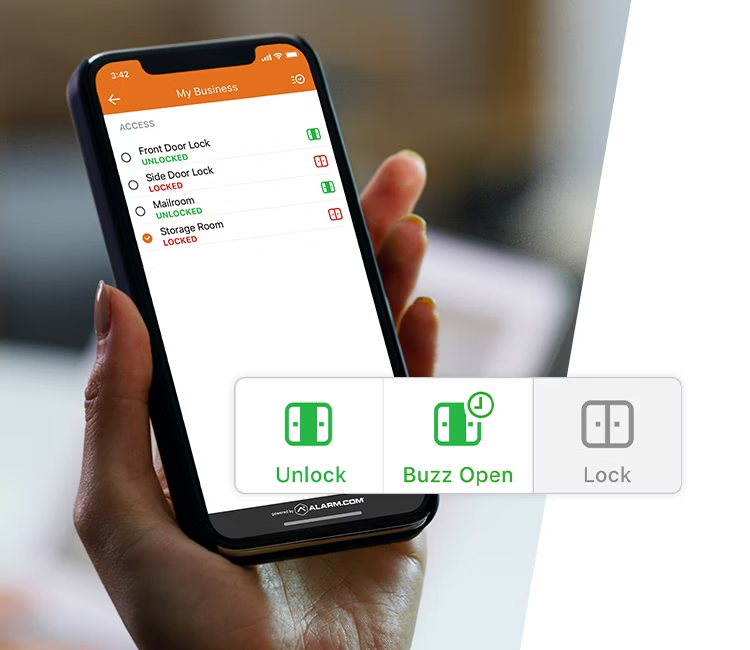
Remote lock control
Automation rules, schedules, and alerts
Reduce false alarms with flexible automation rules and schedules. Automatically disarm the alarm when the first employee badges in for the day and have them double tap their card to arm on the way out the door.
Our ever-evolving system capabilities now allow for multiple products and features to be used in unison, like programming an alarm to go off when certain doors are accessed, to keep your operations even more secure.
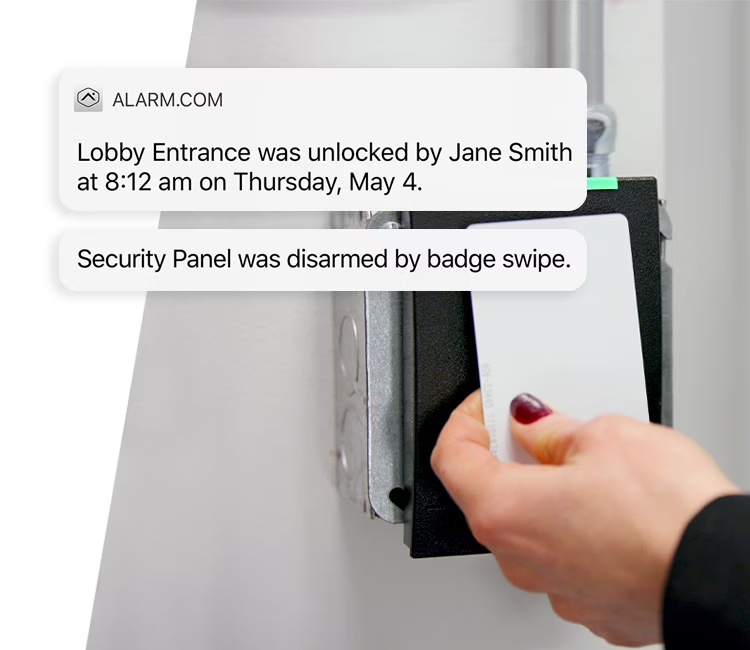
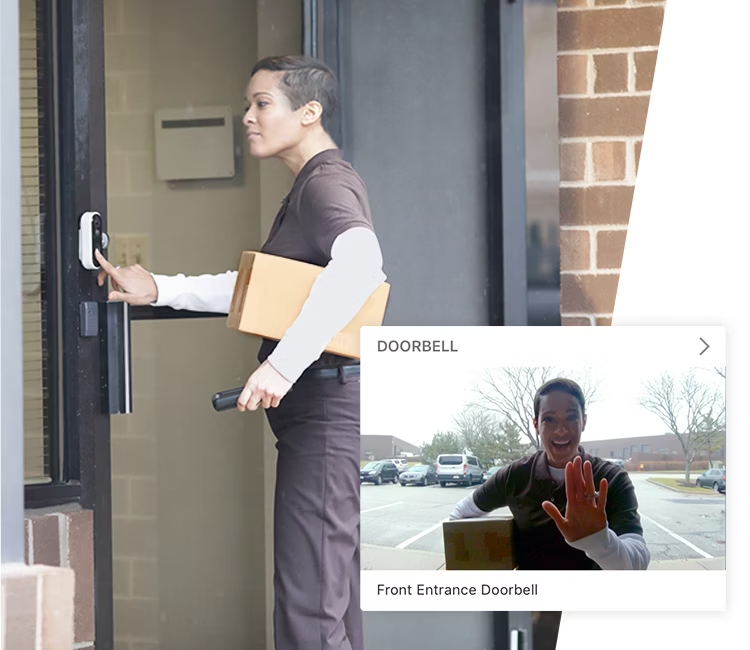
Seamlessly integrated video
Lock, unlock, and buzz doors open from anywhere using the mobile app or website. Easily add and revoke mobile lock control permissions to ensure your property is secure and the right people have access when they need Jump straight from an access history event to the corresponding video with one tap. Receive video doorbell calls and buzz open the door right from the video call screen to let someone in remotely. it.
Access Control System FAQs
How much does it cost to install an access control system?
The cost of installing an access control system depends on the type of system you choose and the size of your facility. Generally speaking, a basic access control system can range from $1,000 to $5,000. This includes the cost of hardware, such as card readers and keypads, as well as installation fees.
For larger facilities with more complex needs, such as those needing biometric authentication systems or multiple levels of security, costs can be higher. The price for these systems can range from $10,000 to $50,000 or more. It’s important to note that this is just for the installation and does not include ongoing maintenance costs or any additional features you may want to add down the line.
Overall, when it comes to access control systems, there are many factors that affect how much it will cost to install one.
What is the best system for access control use?
The best system for access control use is a biometric authentication system. Biometric authentication systems are designed to identify and authenticate individuals based on their physical characteristics, such as fingerprints or facial recognition. This makes it much more difficult for unauthorized personnel to gain access, as the biometric data is unique to each individual and can’t be easily duplicated or stolen.
Biometric authentication systems also offer a high level of convenience, as users don’t have to remember passwords or carry around physical keys or cards. Additionally, many modern biometric systems come with additional security measures such as two-factor authentication, which adds an extra layer of protection against unauthorized access.
Overall, biometric authentication systems are the most secure and convenient way to manage access control in any organization. They provide superior protection from unauthorized personnel while still allowing quick and easy entry for those who are authorized.
What is the main benefit of access control?
The main benefit of access control is security and keeping your property secure and burglar proof. Access control systems allow organizations to limit who has access to their premises and resources, ensuring that only authorized personnel can gain access. This helps protect against unauthorized access, theft, and other malicious activities.
Access control also helps organizations manage their resources more effectively. By limiting access to certain areas or resources, they can ensure that they are used efficiently and securely. For example, an organization might use access control to restrict the use of printers or other office equipment by certain individuals or departments. This ensures that these resources are used responsibly and not abused or misused.
Finally, access control can help improve customer service experiences by allowing customers to quickly and easily gain entry into a building or area without having to wait in line for a security check. This makes it easier for customers to enter the premises and get the services they need without any delays or disruptions.
What is required for access control?
Access control is a security measure that requires authentication and authorization in order to restrict access to certain resources. To ensure effective access control, organizations must have an identity management system in place that verifies the identity of users attempting to gain access. This system should include a secure authentication process such as two-factor authentication or biometrics, which will help protect against unauthorized access. Additionally, it is important for organizations to implement role-based access control (RBAC), which assigns different levels of permissions based on user roles. RBAC helps ensure that only authorized personnel are granted access to specific resources. Finally, organizations should also monitor user activity and audit logs to detect any suspicious behavior or potential security threats. By taking these steps, organizations can ensure that their systems remain secure and protected from unauthorized users.
What equipment is used in access control?
Access control equipment is used to regulate and monitor access to a certain area or resource. This can include physical barriers like locks, turnstiles and gates, as well as electronic systems such as card readers, biometric scanners and keypads.
Physical barriers are the most common form of access control equipment. Locks are used to secure doors, while turnstiles and gates provide an additional layer of security by preventing unauthorized entry. Card readers allow authorized individuals to gain access with a swipe or tap of their card. Biometric scanners use facial recognition or fingerprints for authentication purposes. Keypads require users to enter a code before gaining access.
Electronic systems are becoming increasingly popular in access control due to their convenience and high level of security. They can be integrated into existing infrastructure or installed alongside physical barriers for added protection. In addition, these systems are often connected to alarm systems that will alert security personnel when an unauthorized individual attempts to gain entry.
What is an example of an access control system?
An access control system is a security measure used to grant or deny access to a physical or digital space. Examples of access control systems include biometrics, key cards, and PINs.
Biometric authentication is an example of an access control system that uses a person’s unique characteristics, such as fingerprints or facial recognition, to grant or deny access. Biometrics are increasingly being used in workplaces and other secure areas due to their convenience and accuracy.
Key cards are another form of access control system that require users to swipe a card with an embedded chip in order to gain entry. Key cards can be programmed with various levels of authorization and can be revoked easily if necessary.
PIN numbers are also commonly used for access control systems. This type of system requires users to enter a unique numerical code in order to gain entry into a secured area. PIN numbers provide an additional layer of security since they must be kept confidential and cannot be easily guessed by someone else.
What is the importance of access control?
Access control is an important home security measure used to protect physical and digital assets. It is used to restrict access to authorized personnel and prevent unauthorized access. Access control ensures that only those with the right credentials are able to enter a restricted area or gain access to sensitive data.
Access control systems can be implemented in various ways, such as using physical locks, passwords, biometrics, or other authentication methods. These systems are designed to provide secure access while allowing flexibility for users who need it. Additionally, access control systems can be used to track user activity and monitor who has accessed what information or areas at any given time. This helps organizations maintain compliance with regulatory requirements and ensure that their data remains secure.
Overall, access control provides an extra layer of protection for organizations by ensuring that only authorized individuals have access to sensitive data and restricted areas. It also helps organizations maintain compliance with security regulations and keep their data safe from malicious actors.
What is the purpose of a security alarm as compared to an access control system?
A security alarm is designed to help detect and deter intrusions to your property by sounding an alarm in the event of suspicious activity. On the other hand, an access control system helps prevent unauthorized access to a specific area. While both systems serve different purposes, they can work together to provide comprehensive security for your property. An access control system offers added convenience with features like keyless entry and remote access control. While it generally costs more to install than a security alarm, it can help prevent the high fire alarm cost that could result from an intruder injuring themselves on your property. To ensure effective security, it’s important to choose a system that suits your needs and fits your budget.
How to address faulty access control system components?
If you have a faulty access control system component, the best thing to do is to address it as soon as possible. One of the most simple ways to address a faulty component is to turn off power to the component and then turn it back on again. This can often reset the component and fix the issue. If this doesn’t work, you should consult the user manual for the component or contact the manufacturer for assistance. Be sure to conduct regular maintenance checks on your access control system to prevent future issues.
GET A FREE QUOTE TODAY
Call 1-800-GO-SAFER (467-2337) and speak with our GSS Specialist or complete the form and we will contact you.
